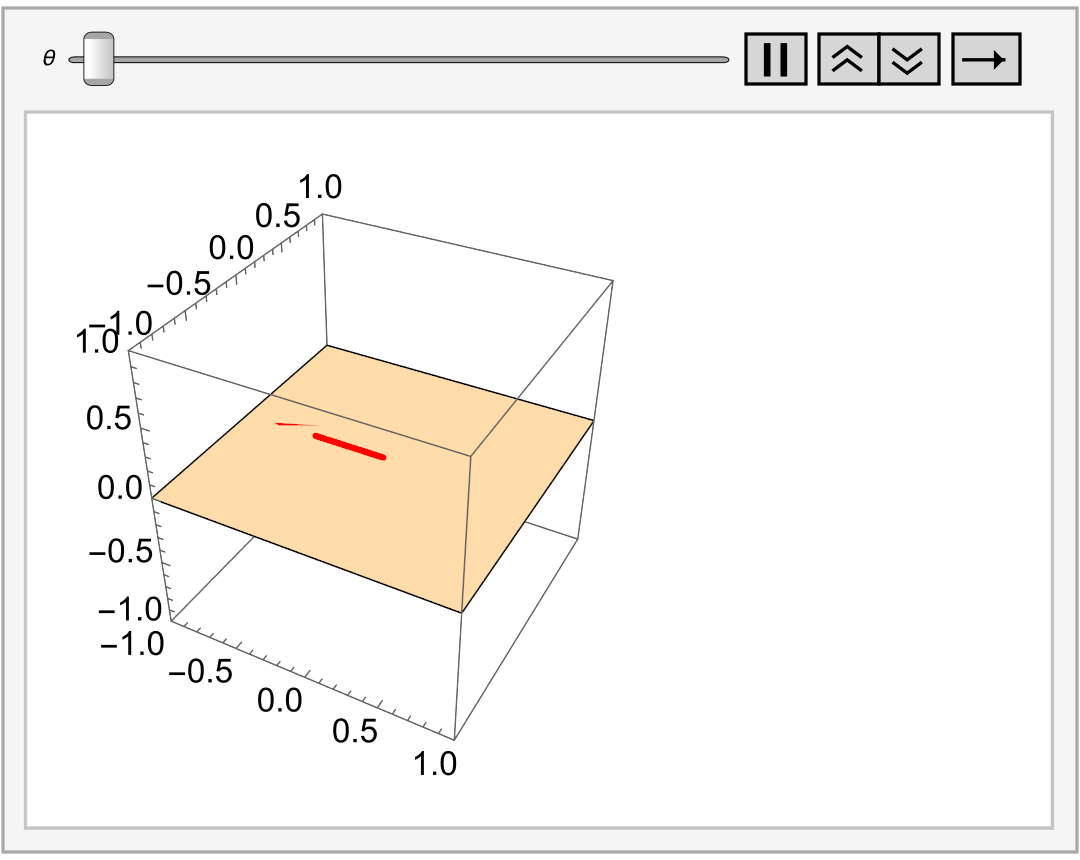This section is divided into a number of subsections, links to which are:
Before we dance with vector products, we remind the basic product that is not related to any vector structure. For any two sets A and B, their Cartesian product consists of all ordered pairs (𝑎, b) such that 𝑎 ∈ A and b ∈ B,
In 1877, to emphasize the fact that the result of a dot product is a scalar while the result of a cross product is a vector, William Kingdon Clifford (1845--1879) coined the alternative names scalar product and vector product for the two operations. These alternative names are still widely used in the literature.
In 1881, Josiah Willard Gibbs (1839--1903), and independently Oliver Heaviside (1850--1925), introduced the notation for both the dot product and the cross product using a period (a ⋅ b) and an "×" (a × b), respectively, to denote them.
The Italian mathematician Gregorio Ricci-Curbastro (1853--1925) and his student Tullio Levi-Civita (1873--1941) are credited for invention and popularization of tensor calculus. One of Albert "Einstein's most-notable contributions to the world of mathematics is his application of tensors in general relativity theory. Abstract mathematical formulation was done in the middle of twentieth century by Alexander Grothendieck (1928--2014).
The wedge product symbol took several years to mature from Hermann Grassmann's work (The Theory of Linear Extension, a New Branch of Mathematics, 1844) and Élie Cartan’s book on differential forms published in 1945. The wedge symbol ∧ seems to have originated with Claude Chevalley (1909--1984) sometime between 1951 and 1954 and gained widespread use after that.
Vector Products
For high-dimensional mathematics and physics, it is important to have the right tools and symbols with which to work. This section provides an introduction for constructing a large variety of vector spaces from known spaces. Besides direct products, we consider other versions of its generalizations.Let V be a vector space over the field 𝔽, where 𝔽 is either ℚ (rational numbers) or ℝ (real numbers) or ℂ (complex numbers). The bilinear functions from V × V into 𝔽 were considered in sections regarding dot product and inner product. In special section, we consider two important vector products, known as tensor product and cross product, as well as its generalization wedge product (also known as exterior product). Our exposition is an attempt to bridge the gap between the elementary and advanced understandings of tensor product, including wedge product.
Vector Product
For arbitrary sets A and U, we denote by V = UA the set of all functions from A into U, If U is a vector space, then the set of all U-valued functions is a vector space, independently what structure is imposed on A. Addition is the natural addition of functions in V = UA: (f + g)(x) = f(x) + g(x), and scalar multiplication (r f)(x) = r (f(x)), for arbitrary functions f, g and every scalar r. We leave verification that V = UA is a vector space to the reader or find a freshman whom you can charge $20 for tutoring that includes verification of all properties of vector space for V.
If A is a discrete set, then let πi be evaluation at i, so that πi(f) = f(i). Now, however, πi is vector valued rather than scalar valued, because it is a mapping from V = UA to U, and we call it the ith coordinate projection rather than the ith coordinate functional. Again these maps are all linear. In fact, the natural vector operations on UA are uniquely defined by the requirement that the projections πi all be linear. We call the value f(j) = πj(f) the jth coordinate of the vector f. Here the analogue of Cartesian n-space is the set U[1..n] of all n-tuples α = (𝑎₁, 𝑎₂, … , 𝑎n), where [1..n] denotes the set of all integers j ∈ ℤ such that 1 ≤ j ≤ n. The set U[1..n] is also designated Un.
There is no reason why we must use the same space U at each index, as we did previously. In fact, if U₁, U₂, … , Un are any n vector spaces, then the set of all n-tuples α = (𝑎₁, 𝑎₂, … , 𝑎n), such that 𝑎j ∈ Uj for each j is a vector space under component-wise operations of addition
Example 1: Let S be the unit sphere in ℝ³:
Let
The xth coordinate projection on U is evaluation at x, so πx(f) = f(x), and the natural vector operations on U are uniquely defined by the requirement that the coordinate projections all be linear. Thus, f + g must be that element of U whose value at x, πx(f + g) is πx(f) + πx(g) = f(x) + g(x) for all points on S. A similar statement is valid for scalar multiplication. ■
Example 2: ■
- With v = [ 1, 0, −1 ], find v⊗v.
- Find [ 1, 0, −1 ] ⊗ [ 1, 1, 1 ].
- Conrad, K., Exterior Powers, 2013.
- Lang, S., Algebra, 3rd Ed. Springer, New York, 2013/2002.
- Fitzpatrick, S., Linear Algebra: A second course, featuring proofs and Python. 2023.
- Lucht, P., Tensor Products, Wedge Products and Differential Forms, Rimrock Digital Technology, Salt Lake City, Utah 84103.
- Lucht, P., Tensor Analysis and Curvilinear Coordinates (2016.
- Roman, S., Advanced Linear Algebra, 3rd Ed. (Springer, New York, 2008).
- Shankar, R., Principles of Quantum Mechanics, 2nd Ed. (Plenum Press, New York, 1994).
- Suter. J., Geometric Algebra Primer (2003, www.jaapsuter.com/geometric-algebra.pdf ).

